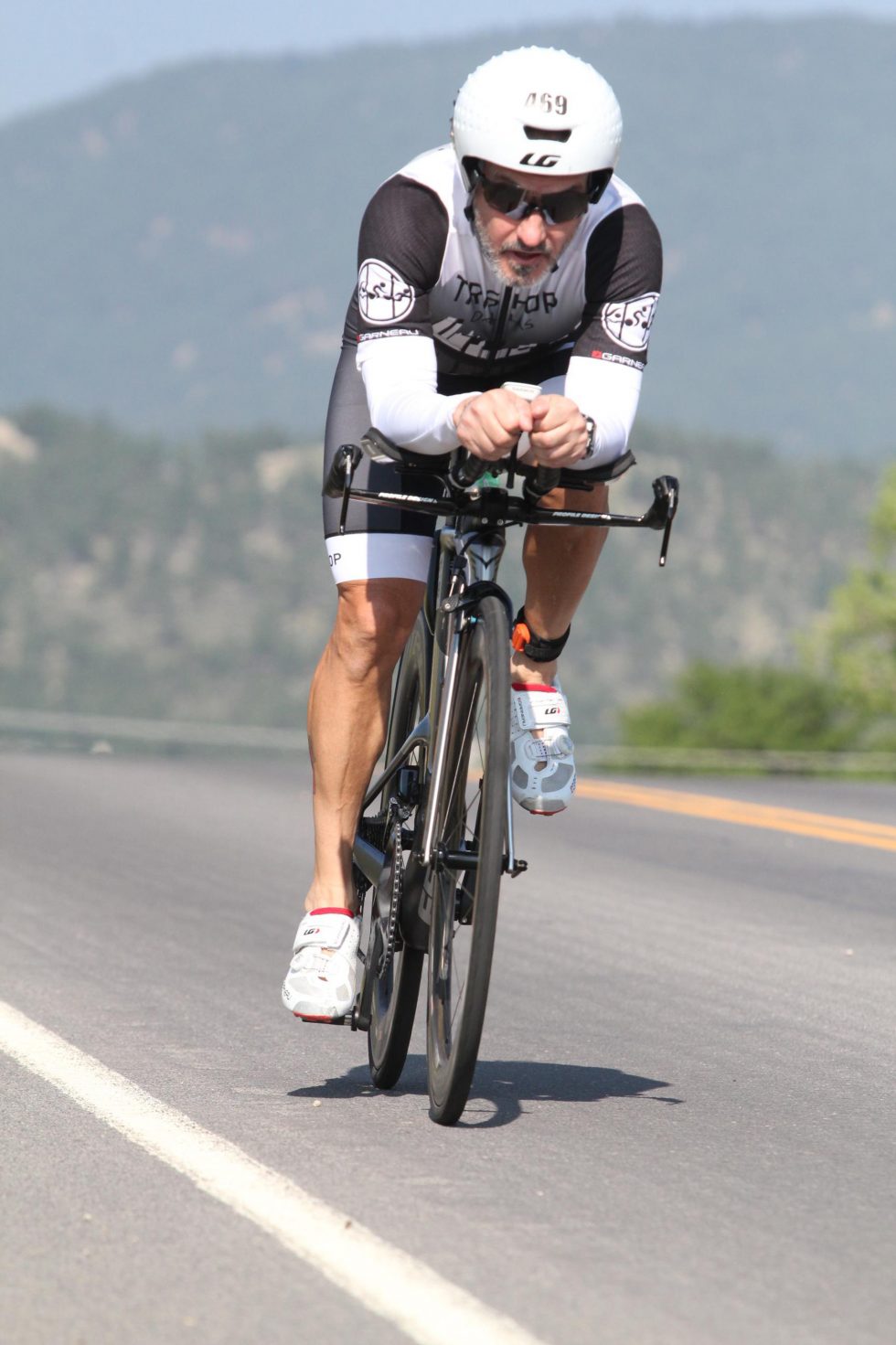Marginal Gains and the Bike
Since my race last weekend at IM 70.3 Ohio I’ve had several people ask about or comment on my bike split. I rode to 1st in AG on the bike. There’s a lot that went into this other than my bike fitness. My bike, the machine, is very optimized to take advantage of every marginal gain. I’ve done several things to ‘save watts’ which I’ll list below. Some marginal gains do not cost anything. Others are not very expensive ($) and some are very expensive ($$$$$). But, it’s up to the individual to decide what a watt is worth.
No Cost Marginal Gains ($0)
Hide things behind other things (0)
Stand in front of your bike at bar level. If you can see it then the wind can ‘see’ it. For example, I hide my Garmin computer and my Xlab Torpedo hydration bottle behind my hands on the aero extensions. My rear bottles don’t hang down below my saddle and are hidden behind my back. I don’t use bottles in the main frame triangle because the wind ‘sees’ these bottles.
Bike Position Posture (0)
Your posture on the bike effects aerodynamics and comfort. During my bike fits, I discuss with the bike fit client the proper bike posture. Forward hip rotation, hinged at the hips, relaxed upper back, sink into the arm pads, head/neck/spine/hips in alignment, shoulder blades retracted and relaxed, head tucked into shoulders.
Low-Cost Marginal Gains ($-$$)
Bike Fit ($$)
A professional Bike Fit is by far the best investment you can make in order to save watts. Your body accounts for approximately 85% of the aerodynamic drag on the rider/bike system. I have spent a lot of time on my fit. Of course, fitting myself is not easy so I had Becky Kaye help me with my fit. I’m extremely comfortable and aero on my bike.
Aero Helmet ($$)
A good aero helmet is necessary and saves about the same watts as a set of aero wheels!
Wax Chain Lubricant ($)
I use Silca Hot Wax for my chain. Wax (paraffin) has been shown to be the best lubricant for bike chains. Better than any liquid lube. Hot waxing a chain is a more involved process, but I just grab an IPA and spend an evening waxing chains!
Tires and Latex Tubes ($$)
For races I run latex tubes. These tubes have a lower rolling resistance than regular butyl tubes. I use Continental GP 5000 tires. These are not the lowest rolling resistance out on the market but are in the top 10 and are very reliable and puncture resistant.
High Cost Marginal Gains ($$$-$$$$)
Aero Race Wheels ($$$$$)
A set of aero wheels is an expensive watt savings. But make a significant difference in aerodynamics. I’m partial to Zipp and Enve wheels. These companies have their history in Formula 1 racing and have exponentially more experience in aerodynamics than any other wheel company. I ride a Zipp 808 front and Zipp Sub 9 disk. Both of which I purchased used and got a great deal on.
Ceramic Bearings ($$$)
My bike has ceramic bearings in the bottom bracket and in the derailleur pulley wheels. Ceramic Speed is the brand most people recognize and the brand that is the most expensive. There are other high quality ceramic bearings on the market. I use Kogel bearings and pulley wheels. Enduro also makes ceramic bearings for bikes.
Oversize Pulley Wheels ($$$)
My bike has oversize pulley wheels in the derailleur cage along with ceramic bearings. I use Kogel oversize pulley wheels.
Crank Length ($$$)
Crank length doesn’t save watts per se but does improve comfort and ability to run well off the bike. My bike has a 155 mm crank length with 53/39 chain ring set. This opens my hip angle, relieves impingement on my hip flexors and is more comfortable. Comfort is key to maintaining a great aero posture on the bike and to running well off the bike.
Watts Saved? What does that mean?
When I talk about saving watts that doesn’t mean I put out fewer watts on the bike. Saving watts means more of the watts produced goes to moving the bike forward instead of being lost as friction in the drive train or friction in the aerodynamic drag of the rider/bike.
Each of the above optimizations are small watt savings but they all add up and yield significant watt savings.
If you have any questions or want to know more, just get in touch.
